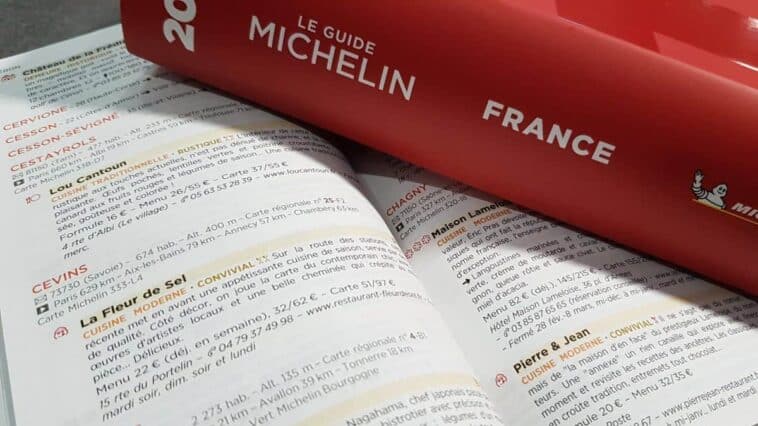The Michelin Guide, which began ranking and indicating the best restaurants in France, has been so successful that today it is recognized as the world oracle of restaurants for crediting excellence and dictating trends in world gastronomy.
Just recognition has become the leading gastronomic guide for consumers lovers of the most varied cuisines, from the most classic and traditional, haute cuisine to the most innovative, the best-rated restaurants on the planet.
Without a doubt, a restaurant well evaluated by the Michelin Guide guarantees a prominent position in the world gastronomic scene.
But, its relevant credibility with Chefs, restaurants and consumers did not happen in a snap of a finger.
These are years of a success story built by values and principles solidified by fair and egalitarian criteria.
The success story of the Michelin Guide
The Michelin Guide was created in 1900 by brothers Andre and Edouard Michelin, who owned a bicycle tire company in Clermont-Ferrand in central France.
With the growth of sales in 1889, believing in the potential of the French automobile industry, they started to manufacture and sell tires for automobiles.
However, the market was only promising since only three thousand vehicles were circulating on French roads and streets. Insufficient for the commercial ambitions of the Michelin brothers.
“How to sell tires if there are few cars? Encouraging people to travel by car and soon wear out their tires, wow!!!”
Much more than a simple idea, a successful commercial vision led André to produce a guide with France’s best hotels and restaurants.
The birth of the most famous and respected hotel and gastronomy guide on the planet!
A small guide with helpful information to help drivers on their trips, with road maps and indications of where to fill up the gas tank, where to eat and stay, and of course, how to change a tire.
And thus increase car sales and, consequently, sales of tires manufactured and marketed by the Michelin brothers.
In 1920, after providing relevant information to travelers at no charge, a new idea, a new commercial vision, kicked off its resounding success.
A new Michelin Guide, sold for seven francs, without the paid advertisements, which began to cater to its old and new readers with a list of hotels in Paris and lists of restaurants from all over France by specific categories.
To increase the credibility of the restaurant section of the guide, inspectors were hired to visit and evaluate restaurants covertly.
In 1926, the guide indicated the outstanding restaurants with one star. After five years, it began to qualify them with a hierarchy of zero to three stars.
In 1936, he published the criteria used to award the stars, a new approach that made it the best-selling guide in the world.
Today the Michelin Guide, which assesses over 30,000 establishments in more than 30 countries on three continents, has sold over 30 million copies worldwide.

The Michelin Guide principles
Check out the six consolidated and unalterable principles of the Michelin Guide, the world’s oracle of restaurants.
Much more than principles, rules of strict ethical conduct followed to the letter, without deviation and exceptions by everyone, from the presidency to the inspectors.
Anonymity Principle
The inspectors who work for the Michelin Guide never identify themselves as such.
They visit the establishments, enjoy the atmosphere, the service, and taste the food, just like you and any other customer.
The anonymity ensures that the inspectors do not receive special treatment and can test and evaluate the reality of the restaurants with complete impartiality.
Principle of Reliability
Reliable reviews are what everyone expects to find on the pages of the Michelin Guide.
They don’t just hope; they trust!
Precisely, to maintain the reliability of the assessments, one of the pillars supporting the success of the Michelin Guide, the restaurants awarded stars in the different categories are never assessed by a single opinion, but rather by a collective decision, the result of a long process of visits and revisits by other inspectors.
Principle of Expertise
The ratings and the indication of the stars are random, not established by rules, and much less the result of opinions without a technical foundation.
All the inspectors are specialists with academic training in gastronomy who have already worked in the area and have lived or traveled in different countries whose skills are rigorously refined, tested, and proven by the Michelin Guide.
Principle of Independence
The principle of independence is a further factor guaranteeing credible evaluations that are free from the personal favoritism of the evaluator.
As a rule, to uphold this principle, all Michelin Guide inspectors, employees, and board members always pay for meals taken in all restaurants, not only in establishments under the evaluation process.
Passion Principle
There is no excellence in results when we don’t have passion for what we do!
As it is, there would be no point in working so hard with such a rigid approach if the inspectors did not love to eat and did not love gastronomy as an art.
Quality Principle
It is the principle of quality that allows the guide to recommend any restaurant, of any gastronomic specialty, from any corner of the planet, as long as its food is of high quality and meets the evaluation criteria:
- • Consistency between visits;
- • Mastery of taste and cooking techniques;
- • Chef’s personality in your kitchen;
- • Relationship between quality and price;
- • Product quality.
The star rating of the Michelin Guide
One star – Exquisite cuisine
Restaurants are awarded one star for only good quality food, regular cooking, and a well-prepared kitchen.
Two stars – Excellent cuisine
What leads the restaurant to receive two stars in the Michelin Guide is the recognition for using exclusively high-quality food, for offering delicious dishes, and, above all, for having the kitchen run by a talented and very experienced Chef.
Three stars: Exceptional cuisine
Receiving three stars means that the dishes served to customers are tasty, always prepared with very high-quality ingredients. Much more!
Only restaurants whose Chefs are famous and admired for their dishes are true works of culinary art!
Other Michelin Guide Grades
Bib Gourmand – the second main category of the Michelin Guide
Restaurants in the Bib Gourmand category, a dummy name representing the Michelin tire brand, are recommended as they have been evaluated for delivering good value for money to customers.
The restaurants in this category are worthy of being awarded stars, but they deliver creative cuisine with delicious and excellent quality dishes for a reasonable price.
In addition to the stars and Bib Gourmand, a third category was launched in the 2016 edition of the Michelin Guide, L’assiette or The Plate (The Plate), which indicates restaurants with “good food.”
The Michelin Guide’s rating symbols
The Michelin Guide uses evaluation symbols so that readers from different countries can easily understand and identify the indication of each restaurant listed:
- • Star symbols – The stars which can be one, two, or three stars indicate the best restaurants in each region;
- • Mascot symbol – launched in 1997 to recognize restaurants that offer good value for money meals: establishments in the Bib Gourmand category;
- • Cutlery symbols – Used to demonstrate the quality and comfort offered, with five pairs of forks and knives being the top rating awarded to luxurious traditional style restaurants;
- • Plate and cutlery symbol – Launched in 2016 to highlight restaurants that serve good food, with fresh and carefully prepared produce.
The Michelin Guide and Brazil
The Michelin Group, which arrived in Brazil in 1927, achieved a prominent position with its tires with a massive presence in the automotive market.
However, the Brazilian Michelin Guide, which is the only edition published in South America and delivered recommendations of establishments in the cities of São Paulo and Rio de Janeiro, was only launched in Brazilian lands in 2015.
Chef Alex Atala’s D.O. M is the first restaurant awarded two stars. The award was won in the launch edition and held exclusively until 2018 when Oro and Tuju also achieved the honor.
Unfortunately, so far, no restaurant in Brazil has achieved the maximum rating of three stars in the Michelin Guide, the world oracle of restaurants.




GIPHY App Key not set. Please check settings